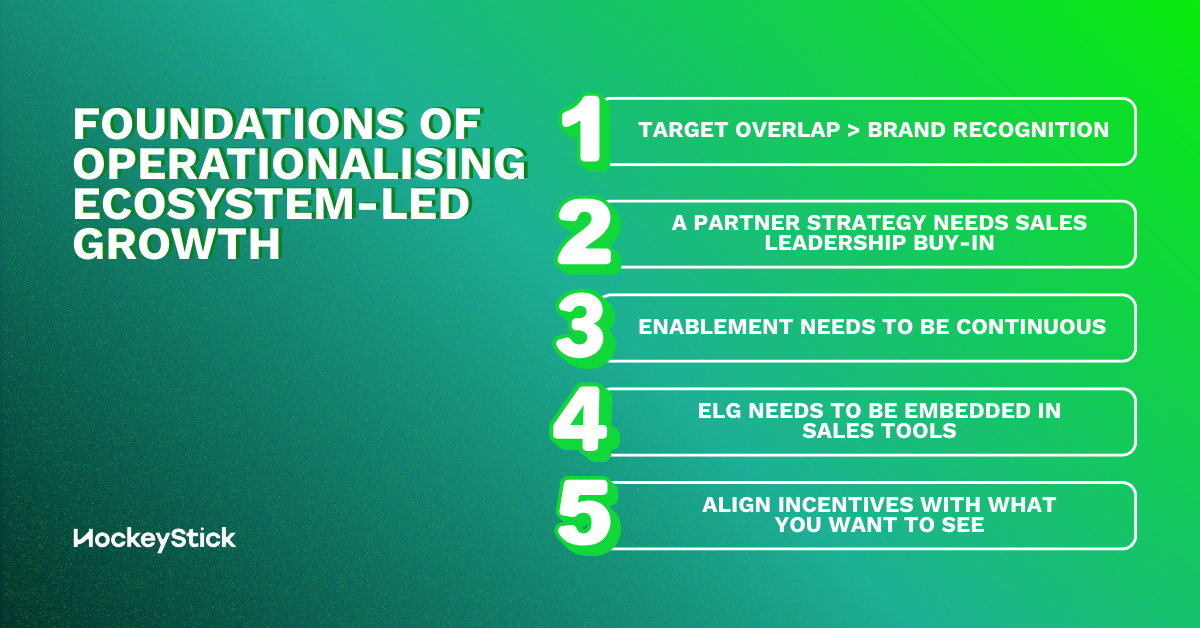It’s easy to slap a partner logo on your deck and call it a strategy but that doesn’t mean it’s doing anything for your sales velocity or your bottom line.
We’ve worked with dozens of companies who proudly name-drop ecosystem partners in investor updates… only to quietly admit: “We’re not seeing any real traction.”
One story we revisited recently helped validate what we’ve always believed at Hockey Stick Advisory:
Ecosystem-led growth (ELG) only works when it’s fully embedded.
Not just in the partnerships team, but across sales targets, data workflows, incentives, and leadership expectations.
The 'Surface-Level' Mistake
Teams often get excited about launching ecosystem partnerships especially with well-known players. But here’s where things start to unravel:
- There’s no clear link to pipeline velocity
- Sellers don’t know how (or when) to use the partnership
- Customer and partner data isn’t connected across systems.
- Goals are vague (sometimes even entirely missing)
- Poor enablement.
What follows is predictable:
Deals are stuck, sales teams disengage, and the so-called “strategic partner” becomes little more than an added LinkedIn logo on the materials.
What One Company Got Right (and What It Confirmed for Us)
We reviewed the State of Partner Sales studies by Crossbeam and Hubspot and we say how one tech company revived a stagnant partnership with a major platform.
The result really validate something we've always believed in.
📈 3x better win rates on partner-sourced deals
⏱ 40% shorter sales cycles
💡 A complete rethink of how sellers work with partner data
They didn’t get there by stacking more partner logos but by going deeper on one... and then aligning everything else around it.
What This Validates About Effective Partner Strategy

1. Target Overlap > Brand Recognition
They didn’t start with, “Who do we want to partner with?”
They asked, “Where does our ICP already overlap?”
2. A Partner Strategy Needs Sales Leadership Buy-In
Their VP of Sales was brought in with ELG built into the brief.
This was a core growth priority.
3. Enablement Needs to Be Continuous
They trained reps on what the integration actually does, how to identify partner-qualified leads, and how to activate them in real-world workflows.
4. ELG Needs to Be Embedded in Sales Tools
With tools like Crossbeam Copilot, partner data showed up natively within the CRM.
5. Align Incentives with What You Want to See
Reps were rewarded for ELG outcomes. That shifted behaviour quickly.
The next time you’re building out a partner play, don’t ask:
“Who do we want to partner with?”
Ask:
👉 “Which partner helps us create a better experience for the buyer?”
👉 “Where does our customer workflow naturally overlap?”
Your answers to these will be the foundation of what you'll build to secure partnerships that result in revenue.